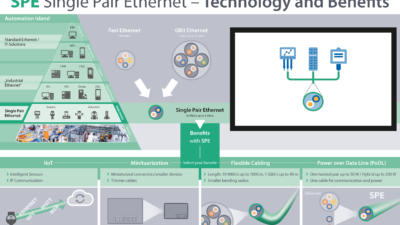'Automation must contribute to building shareholder value and tie seamlessly into strategic plans'
William J. Ketelhut, president of The Foxboro Company, spoke to Control Engineering in Oak Brook, May 23, 2000. Excerpts follow.
Q. Sometimes reflecting on past strengths can provide insight into where a company is and where it’s going. What are two or three things in Foxboro’s past that have become vital in where the company stands today and how it’s positioned for the future?
We believe we’re changing the rules of game, with the guaranteed economic performance improvement proposition. This emphasizes performance more than technology itself. The people of The Foxboro Company are highly differentiated in their desire to build shareholder value.
To do that, we’re five months into a massive rework-a redeployment of efforts-focusing on a whole different set of metrics and skills. Like our customers, we’re undergoing a lot of internal change. We’re retraining sales. We can’t bet the company and wait for changes to happen to happen; we’re going to re-engineer to stay ahead of change.
In looking at our competencies, we announced May 19, sale of our Process Gas Chromatograph and Environmental Monitoring businesses. What remains is a broad variety combined talents-at Foxboro, with acquisition of Simulation Sciences [Brea, Calif.] and staff additions to the services side, and with other Invensys companies, present and planned : Safetran and Westinghouse [railway] Signals; Wonderware; APV in food, beverage, dairy, pharmaceutical and healthcare industries; and Triconix, among many others.
Q. What are the key characteristics in customers’ environments today that influence how Foxboro’s going to market?
Our customers tell us manufacturing has to change to add economic value, reduce costs, and add flexibility. Manufacturing needs to migrate from a process that pushes out products to part of the supply chain that satisfies the pull on demand. Automation must contribute to building shareholder value and tie seamlessly into strategic plans. These have big impacts through and on automation systems.
The mix of customers’ talents is changing. Contractors also are downsizing. As a result, customers are looking to us to fill the gap. The traditional automation platform market is in decline. There will be a recovery soon, but not to the 5-10% growth rate of recent years. Market forces dictate less overall capital investment. Mergers and acquisitions have wide influences. In other examples, competition of utility deregulation has drastically decreased construction of large power generating units. Additions to big petrochemical plants will be incremental-adding a line, rather than large green-field construction. These smaller plant additions won’t consume the same level of controls, so we focus on providing plant ‘Tune-Up Kits,’ aiming to optimize performance of new additions and existing investments.
At the same time, automation has been hit by the heavier electronics bang for the buck. Price per function is coming down. With more advanced process control, work will be done at higher levels. There’s lot of opportunities there, especially with upgrades from analog to digital. Businesses have make huge investments in enterprise resource planning systems software and services-business to business, and embedded. Rather than take old processes and put them on line, customers have to shift from multiple legacy systems to one new system.
Other influences include higher turnover of customer employees, changes in processes, concerns about abnormal situations, and continuing challenges with adequate training. Some estimate that as much as 40% of customers’ advanced controls are shut off.
Q. What are some of the key technologies or products highlighted recently that are most influencing how customers think about and implement automation and control solutions?
Tools provide real-time performance management-dynamic performance measures-via an operator dashboard. Indicators focus on economics, rather than temperature and pressure, with daily information-green is good; red is bad. We’re the only one that can put together this combination of abilities. Performance gains are so striking, I’m disappointed when a customer doesn’t measure before and after. In the control-engineering world, people should be doing a lot more real-time business performance management.
We’re working on all kinds of projects via the Invensys Business Solutions group, a team of consultants for enterprise automation and e-business contracts, including two recent dairy food contracts totaling $8 million. The group looks at current business practices and proposes the ideal state. Some contracts have almost zero Invensys product content; others contain up to 40%. The focus of this group is in providing the optimal solution for the client as opposed to selling our own company’s product.
Solution-oriented products include continuing advancements in the I/A Series providing deep and rich industry knowledge, a user-focused command center console, a 40-times increase in fieldbus speed, software suites, world’s most comprehensive batch software, advanced measurement tools and instruments.
Our DPM [Dynamic Performance Measures software] products, part of the Lifetime Performance Services efforts, will be a cornerstone to lot of what we do in automation. Without quantifying economic benefits, it’s harder to justify projects going forward. Investments in automation require a series of enabling strategic measurements in performance from products and services provided.
Foxboro’s nuclear magnetic resonance device analyzes 40,000 substances, unaffected by temperature or pressure. Combined with other solutions it allows more precision in refinery operations. We found one customer giving away a lot of money by selling product with a higher octane than spec.
Technology-rich products are a strategic element of performance. Customers have to measure and get more intelligence from devices; and it is secondary as to where the control loop runs as is part of the fieldbus debates. It’s inherent in process control to move information around and require a data concentrator in some portion of the architecture. The most important aspect of fieldbus is accessing information to form the basis of performing advanced diagnostics to drive increases in uptime. The focus is on the health of the measurement and using models, actual readings, measurement benchmarks, and real-time or predictive corrections as needed. This enhances the role of digital fieldbus by providing tangible economic benefit.
While we are the primary vendor on the world’s largest installation of FOUNDATION fieldbus technology, we’ll also continue to actively support Profibus, and continue with our FoxCom protocol, and HART. All of these can leverage information to provide economic performance.
It’s a big shift to emphasize economics over technology, but when the value and services work, customers love it. It takes a mindset change in our sales staff’s approach. Obviously, this pay for performance proposition has to be with the right customer. We have discussions with control engineer, but do get higher in organization, with sales and consultants to walk through process of identifying and evaluating opportunities and what metrics to measure.
Q. What are the leading challenges for customers today? What advice can you offer?
Traditional process and discrete markets lag behind hybrid automation growth. Big markets are still in constriction. The new value proposition requires that we target what the client base needs. Customers have been stunned with the rapid changes. Our response has moved beyond selling the best technologies to providing measurable performance improvements, guaranteed, with no capital investments.
We get paid for our investments in customers’ plants based on our performance. In most cases, we produce a positive cash flow from day one. The customer gets something for nothing. When we pitch to a board of directors, the chief financial officer listens intently. This is a great opportunity for both us and our clients, and I hope a move to this type of contracting accelerates.
What we want is to align our activities with customers’ needs. I’m certain when we measure the right things, we will get the right behavior. Some deals are based on a monthly fee, with fees increasing or decreasing with plant availability; others are geared to creating a positive cash flow. Industries we offer this to include pulp and paper, pharmaceuticals, chemical, petrochemical, and food and beverage.
Examples include the Lower Colorado River Authority Sim Gideon plant , with 65% heat-rate improvement and 12.3% NOx reduction, and an Eli Lilly facility had 100% return on automation investment in less than one month.
While the power industry was our first market for these guarantees, we now serve dozens of vertical industries, more than 30 projects qualified, 10 orders, and more than $100 million in potential sales. Our sales force is retraining to discuss how to deliver economic improvements, rather than talking only technologies. We helping customers understand that the time to install a new automation system is before they can’t get parts for the old one. Controls engineers new objective is to align their goals with those of senior management.
There’s a lot of productivity out there; customers need to challenge us to help provide economic performance. The biggest hazard is lost opportunity from not partnering. We need to get more aggressive with services to drive lifecycle economic benefits and lower lifecycle costs. It’s picking up momentum, more proposals are going out, and the customer base is more receptive. We received strong input feedback from applications discussed at our user’s group meeting. The Tune-Up Kit presentations were jammed.
Control engineers are going to get squeezed by e-business, the web, buy-side or sell-side e-business, but there’s lot of evidence of enormous opportunity for those who get a lot more sophisticated in their knowledge.
Q. What are among the most difficult challenges for Foxboro today, and what advice do you offer employees?
Employees have had huge cultural and technological changes in the last 10 years; an Intel Pentium-level chip now has the performance of previous workstations. Technology will continue to evolve. We almost have to relearn everything every 10 years. Continuous learning is required to stay at the leading edge and is a key challenge for our employees.
I think we have to move very quickly to transform to deliver economic benefits-clients need it. Previously, we equated service with product support. The vision now is to have a much broader array. This has become a real opportunity for our customer base to push for more productivity, but we all have limited time to scramble.
Q. Can you provide insight into local versus global markets?
Our markets are just now achieving true globalization. Previously, plants operated autonomously or regionally. Now we have virtual global corporations, with fewer political barriers, greater economic trade, and more effective delivery services. Volatile economic conditions add complexity, with the economic crisis in Asia in 18 months ago, then in South America, then in Russia. Resource availability has become a global concern with the price of oil going from historical lows to highs in 12 months. Even human resources has become a global issue with near zero engineering unemployment in North America, and strong engineering resources available in India.
Other market influences include environmental compliance and pressures on profits so that economics replaces technology drivers. In automation, market forces are shifting as the distributed control system world matures and the automation platform market shrinks. Application software services area is growing, and customers’ capital budgets are reduced. We see business-level processes merging with automation.
Customers in multinational corporations deal with local versus global challenges, compressing time and decisions-Heineken, for instance, has breweries, in Vietnam, Singapore, and Holland. The Internet and e-business add velocity, shrinking time and distance. This exacerbates fluctuations, the rate of change accelerates, as the supply chain changes to pull from push systems. This ripples back into a re-engineering of business practices from controls and goes through the business systems. In a lot of industries, we’ll see prices on the spot market create an immediate change in production. For the process industries, that will be radical change.
The power industry has already begun specialization related to such competition, with some focusing on generation and others becoming power transmission and distribution companies. Prices fall, but like in the telecommunications industry, the customer may not be able to figure out if it’s cheaper. The biggest issue with deregulation is to what happens with rates on a 102-degree day in August. It’s going to be interesting to see.
Dick Johnson, Control Engineering senior editor, participated in the interview.
About William J. Ketelhut, president, The Foxboro Company
Mr. William J. Ketelhut was appointed to his current position as President of The Foxboro Company’s worldwide operations in July 1998. Foxboro, a world leader in industrial automation systems and services, is a major operating unit of Invensys Intelligent Automation (IA), a division of Invensys plc of the United Kingdom.
Mr. Ketelhut was formerly President of Siebe Intelligent Automation/Asia Pacific, where his responsibilities included overseeing the combined regional operations of The Foxboro Company and APV, another major IA operating unit. He was appointed to this position in August 1997.
Mr. Ketelhut joined the Invensys Intelligent Automation organization (then known as Siebe Intelligent Automation & Siebe Control Systems) in October 1994, as President of the Siebe Instrument Division, which at the time included Barber Colman Industrial Instruments, ERO Electronics, and Siebe’s Analytical Instrumentation Division.
Prior to Siebe, Mr. Ketelhut was President of GE/Microswitch Control, Inc., a joint venture of Honeywell and GE, located in Charlotte, N.C. He joined GE’s Technical Marketing Program in 1975, and later became a Sales Engineer in the company’s Apparatus Sales Division. From there, he was promoted into the Factory Automation business, ultimately becoming Manager of GE Fanuc’s Programmable Controller and Cimplicity business. In 1992, Mr. Ketelhut was named President and CEO of the GE/Microswitch joint venture.
Mr. Ketelhut is a 1975 engineering graduate of Brown University and received his MBA from the University of Chicago in 1980. He holds several patents and has published numerous articles.


